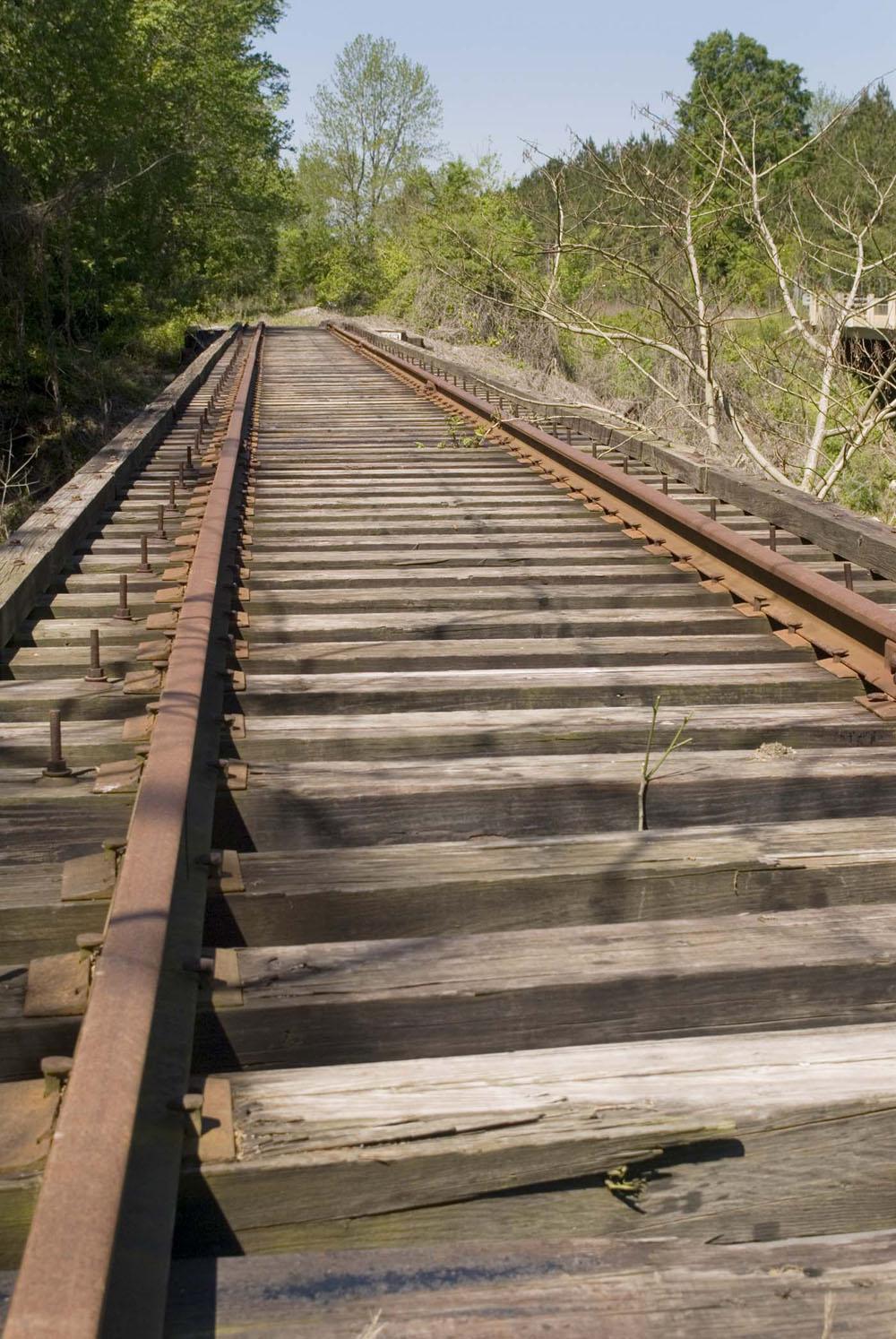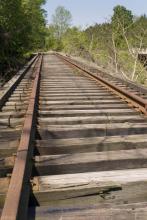Information Possibly Outdated
The information presented on this page was originally released on April 19, 2007. It may not be outdated, but please search our site for more current information. If you plan to quote or reference this information in a publication, please check with the Extension specialist or author before proceeding.
MSU team explores railroad recovery
MISSISSIPPI STATE -- Local economic development officials, a Mississippi State University team and railroad owners are working to revive a 92-mile section of tracks linking the Delta and the eastern part of the state.
It has gone through several name changes, but what is today the Columbus and Greenville Railway, commonly referred to as C&G, was built in the late 1800s to ship cotton and other agricultural products out of the Delta to points in the Southeast. Most of the line has been inactive since 2002 because costly repairs were needed for the 156 bridges and deteriorating track throughout the line's six counties: Leflore, Carroll, Montgomery, Webster, Oktibbeha and Clay.
“When the railroad first made its way through Mississippi, it not only transported goods but indirectly helped establish rural communities near the railroad depots,” said Cynthia Wilson, Webster County development council executive director.
When the line first became inactive, the idea for a “rails for trails” tourism line developed. However, after meeting with other economic developers in the six counties and officials with the railroad, Wilson said it became apparent that the best option could be to refurbish the line.
“We also had to establish a regional rail authority to acquire state and federal support in refurbishing the line,” Wilson said. “By establishing a regional rail authority and an executive board, we will hopefully secure funding for the rail line.”
The economic development council applied for and received a $40,000 grant from the Appalachian Regional Commission to initiate an exploratory study of revitalizing the Columbus and Greenville Railway line.
Wilson, a retired Mississippi State University Extension Service employee, immediately turned to the university for help.
After visiting with Wilson, Virgil Culver, director of the MSU Community Action Team, assembled a group of MSU experts, including personnel from the Industrial Outreach Service and the departments of Political Science and Public Administration and Industrial and Systems Engineering to address the potential of the inactive railway.
“In light of escalating fuel prices, rail is the most fuel-efficient and environmentally friendly mode of transportation,” said Roger Bell, president and chief executive officer for the C&G railway. “Rail transport is also considered an advantage many times when an industry is looking to locate to an area.”
The MSU team is evaluating the impact reopening the line would have on recruiting industry to north-central Mississippi by estimating how it would affect freight flow throughout the state.
“Currently, there is not an east-west line north of Jackson,” said Bill Martin, Industrial Outreach Service project manager. “The research team will determine what, if any, benefit will be realized in the distribution of goods, including use of the Port of Greenville, the state's largest river port.”
The cost to renovate the line is estimated to be almost $40 million. To determine if the benefits will outweigh the cost, the team is evaluating the economic potential to rural counties, including the role a rail line will have in attracting industry, Martin added.
The MSU-led project includes the creation of a freight-flow map for Mississippi to demonstrate how goods move through and around the state.
“The team will evaluate the abandoned line to determine if its reopening would improve the movement of goods considering the other modes of transportation,” Martin said. “This includes reviewing the current transportation system that serves Mississippi and the region, including the ports of Mobile, Gulfport, New Orleans, Greenwood and Memphis.”
The research team is also conducting informal, one-on-one interviews with industry representatives to learn about methods and cost of freight shipment used by regional industries.
The interviews will determine if and how much cost savings to industries would result from reopening the line. After the study, a market assessment of refurbishing the line will be presented to C&G.
Martin, however, is already optimistic about the potential.
“We see, on this dormant railroad, an opportunity to improve transportation and attract new industry to the state,” he said.
If he is right, the sounds of locomotives may return to many small towns in central Mississippi.
Contact: Bill Martin, (662) 325-0513








